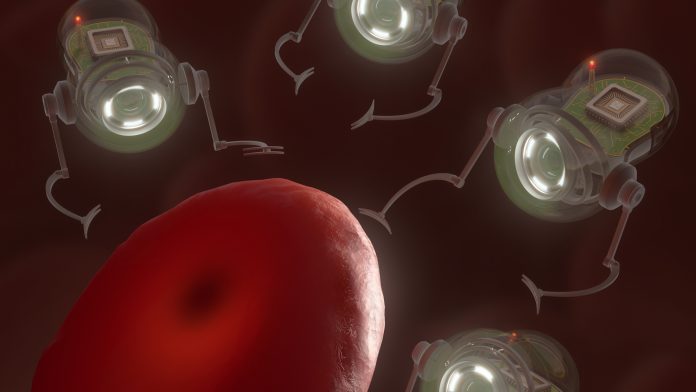Scientists from Eindhoven University of Technology, Netherlands, have developed a tiny plastic robot that is powered by magnetism and light.
The new plastic robot is made of responsive polymers, which moves under the influence of light and magnetism. The team from Eindhoven University predict that this ‘wireless aquatic polyp’ could be able to attract and capture contaminant particles from surrounding liquid and transport cells for analysis in diagnostic devices.
In a paper published in the journal PNAS, researchers discuss why the mini robot was inspired by a coral polyp; a small soft creature with tentacles, which makes up the corals in the ocean. Doctoral candidate Marina Pilz Da Cunha: “I was inspired by the motion of these coral polyps, especially their ability to interact with the environment through self-made currents.” The stem of the living polyps makes a specific movement that creates a current which attracts food particles.
The developed wireless artificial polyp has a stem that reacts to magnetism, and light steered tentacles. “Combining two different stimuli is rare since it requires delicate material preparation and assembly, but it is interesting for creating untethered robots because it allows for complex shape changes and tasks to be performed,” explains Pilz Da Cunha.
Features of the plastic robot
The device can grab and release objects underwater, however the photothermal characteristics of the robot have posed some challenges to its development. Pilz Da Cunha: “Heat dissipates in water, which makes it impossible to steer the robot under water.” She therefore developed a photomechanical polymer material that moves under the influence of light only.
This new material can hold its deformation after being activated by light. While the photothermal material immediately returns to its original shape after the stimuli has been removed. This allows different stable shapes, to be maintained for a longer period. “That helps to control the gripper arm; once something has been captured, the robot can keep holding it until it is addressed by light once again to release it,” says Pilz Da Cunha.
By placing a rotating magnet underneath the robot, the stem circles around its axis. Pilz Da Cunha: “It was therefore possible to actually move floating objects in the water towards the polyp, in our case oil droplets.”









